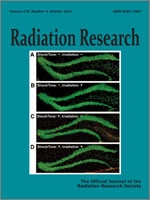In a recent epidemiological study, Bayesian uncertainties on lung doses have been calculated to determine lung cancer risk from occupational exposures to plutonium. These calculations used a revised version of the Human Respiratory Tract Model (HRTM) published by the ICRP. In addition to the Bayesian analyses, which give probability distributions of doses, point estimates of doses (single estimates without uncertainty) were also provided for that study using the existing HRTM as it is described in ICRP Publication 66; these are to be used in a preliminary analysis of risk. To infer the differences between the point estimates and Bayesian uncertainty analyses, this paper applies the methodology to former workers of the United Kingdom Atomic Energy Authority (UKAEA), who constituted a subset of the study cohort. The resulting probability distributions of lung doses are compared with the point estimates obtained for each worker. It is shown that mean posterior lung doses are around two- to fourfold higher than point estimates and that uncertainties on doses vary over a wide range, greater than two orders of magnitude for some lung tissues. In addition, we demonstrate that uncertainties on the parameter values, rather than the model structure, are largely responsible for these effects. Of these it appears to be the parameters describing absorption from the lungs to blood that have the greatest impact on estimates of lung doses from urine bioassay. Therefore, accurate determination of the chemical form of inhaled plutonium and the absorption parameter values for these materials is important for obtaining reliable estimates of lung doses and hence risk from occupational exposures to plutonium.
BioOne.org will be down briefly for maintenance on 17 December 2024 between 18:00-22:00 Pacific Time US. We apologize for any inconvenience.
How to translate text using browser tools
21 June 2011
Uncertainties on Lung Doses from Inhaled Plutonium
Matthew Puncher,
Alan Birchall,
Richard K. Bull
ACCESS THE FULL ARTICLE

Radiation Research
Vol. 176 • No. 4
October 2011
Vol. 176 • No. 4
October 2011




